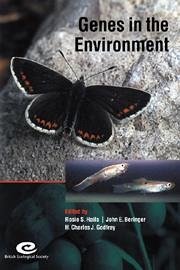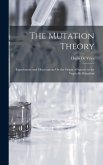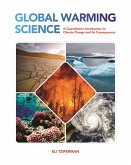Molecular, genetic and modelling techniques are central to ecology, providing valuable new tools for addressing complex ecological questions and insights into our understanding of the dynamics of populations and communities. Genes in the Environment reviews a diverse range of topics, including community dynamics in soils and water, gene flow and spatial dynamics, and the evolution of pathogenic and symbiotic relationships. Organisms studied range from bacteria, viruses and fungi to insects, plants and fish. New light is thrown on such questions as: what is the relationship between population dynamics and spatial patterns of genetic variation observed in fragmented populations? How is genetic variation maintained? What are the relative roles of gene flow and selection in the maintenance of climes? This volume will appeal to advanced students and to researchers interested in developments at the interface of molecular biology and ecology.
Table of contents:
Part 1. Gene Flow and Spatial Dynamics: 1. Estimating rates of gene flow in endemic butterfly races: the effect of metapopulation dynamics D. E. Taneyhill, J. B. Mallet, I. Wynne, S. Burke, A. S. Pullin, R. J. Wilson, R. K. Butlin, M. J. Hatcher, B. Shorrocks and C. D. Thomas; 2. Virus transmission and gene flow between two species of the Dutch elm disease fungi, Ophiostoma ulmi and O. novo-ulmi: deleterious viruses as selective agents for gene introgression K. W. Buck, C. M. Brasier, M. Paoletti and L. J. Crawford; 3. The population genetic consequences of range expansion: oak gallwasps as a model system G. N. Stone, R. J. Atkinson, G. Brown, A. Rokas and G. Csóka; 4. A genetic perspective of Drosophila melanogaster latitudinal body size climes W. J. Kennington, J. Gockel, D. B. Goldstein and L. Partridge; 5. Spatial geometry determines gene flow in plant populations T. R. Meagher and C. Vassiliadis; 6. Measuring genetic variation in wild populations: from molecular markers to adaptive traits G. R. Carvalho, C. van Oosterhout, L. Hauser and A. E. Magurran; 7. Have recent developments in molecular techniques led to greater insight into evolutionary and ecological processes in plant populations? A. Smithson and M. R. Macnair; Part II. Microbial Community Dynamics in Soils and Water: 8. The role of genomics in methylotrophic bacteria for understanding biogeochemical cycling L. Chistoserdova and M. E. Lidstrom; 9. Microbiological basis of land use impact on the soil methane sink: molecular and functional analysis D. B. Nedwell, J. C. Murrell, P. Ineson, D. S. Reay, S. Radajewski, N. McNamara and S. Morris; 10. Molecular genetic analysis of the ammonia-oxidizing bacterial community in a defined hypereutrophic freshwater lake C. B. Whitby, R. A. Meade, G. Hall, J. R. Saunders, R. W. Pickup and A. J. McCarthy; 11. The influence of selection pressures on species diversity, functional gene diversity and activity of ammonia-oxidizing bacteria J. I. Prosser, T. M. Embley and G. Webster; Part III. Host-Pathogen Interactions: 12. Mutualistic interactions amongst viruses? M. Naylor, H. C. J. Godfray, D. W. Pallett, M. Tristem, J. P. Reeves and J. I. Cooper; 13. The ecology of turnip mosaic virus in wild populations of Brassica species A. F. Raybould, M. J. Alexander, E. Mitchell, M. I. Thurston, D. W. Pallett, P. Hunter, J. A. Walsh, M.-L. Edwards, A. M. E. Jones, C. L. Moyes, A. J. Gray and J. I. Cooper; 14. The molecular evolution of host specificity in the rhizobium-legume symbiosis J. P. W. Young, L. A. Mutch, D. A. Ashford, A. Zézé and K. E. Mutch; 15. The existence and persistence of genotypic variation in nucleopolyhedrovirus populations D. J. Hodgson, R. B. Hitchman, A. J. Vanbergen, R. S. Hails, S. E. Hartley, R. D. Possee, A. D. Watt and J. S. Cory; 16. Host dynamics and pathogen variation in insect-baculovirus interactions C. M. Griffiths, R. McVean, R. Benmayor, S. M. Sait, D. J. Thompson, R. D. Possee, J. S. Cory and M. Begon; 17. The ecological significance of symbiotic microorganisms in animals: perspectives from the microbiota of aphids A. E. Douglas, A. C. Darby, L. M. Birkle and K. F. A. Walters.
What is the relationship between population dynamics and spatial patterns of genetic variation in fragmented populations? How is genetic variation maintained? What are the relative roles of gene-flow and selection in the maintenance of climes? Genes in the Environment throws new light on these questions by reviewing the recent research.
Presents recent research in the developing field of molecular, genetic and modelling techniques.
Table of contents:
Part 1. Gene Flow and Spatial Dynamics: 1. Estimating rates of gene flow in endemic butterfly races: the effect of metapopulation dynamics D. E. Taneyhill, J. B. Mallet, I. Wynne, S. Burke, A. S. Pullin, R. J. Wilson, R. K. Butlin, M. J. Hatcher, B. Shorrocks and C. D. Thomas; 2. Virus transmission and gene flow between two species of the Dutch elm disease fungi, Ophiostoma ulmi and O. novo-ulmi: deleterious viruses as selective agents for gene introgression K. W. Buck, C. M. Brasier, M. Paoletti and L. J. Crawford; 3. The population genetic consequences of range expansion: oak gallwasps as a model system G. N. Stone, R. J. Atkinson, G. Brown, A. Rokas and G. Csóka; 4. A genetic perspective of Drosophila melanogaster latitudinal body size climes W. J. Kennington, J. Gockel, D. B. Goldstein and L. Partridge; 5. Spatial geometry determines gene flow in plant populations T. R. Meagher and C. Vassiliadis; 6. Measuring genetic variation in wild populations: from molecular markers to adaptive traits G. R. Carvalho, C. van Oosterhout, L. Hauser and A. E. Magurran; 7. Have recent developments in molecular techniques led to greater insight into evolutionary and ecological processes in plant populations? A. Smithson and M. R. Macnair; Part II. Microbial Community Dynamics in Soils and Water: 8. The role of genomics in methylotrophic bacteria for understanding biogeochemical cycling L. Chistoserdova and M. E. Lidstrom; 9. Microbiological basis of land use impact on the soil methane sink: molecular and functional analysis D. B. Nedwell, J. C. Murrell, P. Ineson, D. S. Reay, S. Radajewski, N. McNamara and S. Morris; 10. Molecular genetic analysis of the ammonia-oxidizing bacterial community in a defined hypereutrophic freshwater lake C. B. Whitby, R. A. Meade, G. Hall, J. R. Saunders, R. W. Pickup and A. J. McCarthy; 11. The influence of selection pressures on species diversity, functional gene diversity and activity of ammonia-oxidizing bacteria J. I. Prosser, T. M. Embley and G. Webster; Part III. Host-Pathogen Interactions: 12. Mutualistic interactions amongst viruses? M. Naylor, H. C. J. Godfray, D. W. Pallett, M. Tristem, J. P. Reeves and J. I. Cooper; 13. The ecology of turnip mosaic virus in wild populations of Brassica species A. F. Raybould, M. J. Alexander, E. Mitchell, M. I. Thurston, D. W. Pallett, P. Hunter, J. A. Walsh, M.-L. Edwards, A. M. E. Jones, C. L. Moyes, A. J. Gray and J. I. Cooper; 14. The molecular evolution of host specificity in the rhizobium-legume symbiosis J. P. W. Young, L. A. Mutch, D. A. Ashford, A. Zézé and K. E. Mutch; 15. The existence and persistence of genotypic variation in nucleopolyhedrovirus populations D. J. Hodgson, R. B. Hitchman, A. J. Vanbergen, R. S. Hails, S. E. Hartley, R. D. Possee, A. D. Watt and J. S. Cory; 16. Host dynamics and pathogen variation in insect-baculovirus interactions C. M. Griffiths, R. McVean, R. Benmayor, S. M. Sait, D. J. Thompson, R. D. Possee, J. S. Cory and M. Begon; 17. The ecological significance of symbiotic microorganisms in animals: perspectives from the microbiota of aphids A. E. Douglas, A. C. Darby, L. M. Birkle and K. F. A. Walters.
What is the relationship between population dynamics and spatial patterns of genetic variation in fragmented populations? How is genetic variation maintained? What are the relative roles of gene-flow and selection in the maintenance of climes? Genes in the Environment throws new light on these questions by reviewing the recent research.
Presents recent research in the developing field of molecular, genetic and modelling techniques.








